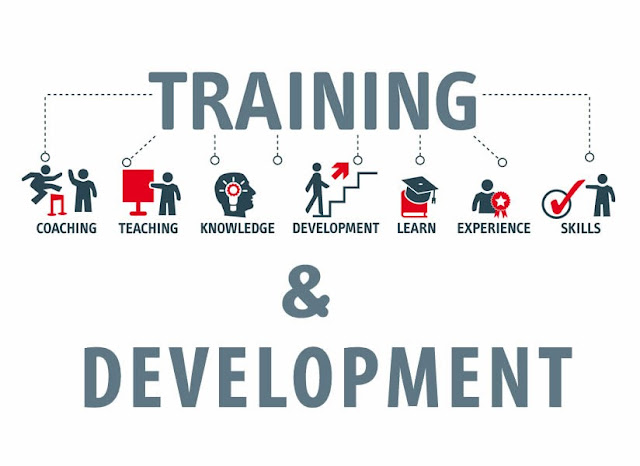Trends and Innovations in Global Workforce Management
In today's interconnected world, the management of global workforces is undergoing a profound transformation. With advancements in technology, changing demographics, and evolving business dynamics, organizations are constantly adapting their workforce management strategies to stay competitive and agile. In this blog, we will delve into the key trends and innovations shaping global workforce management, and explore their implications for organizations worldwide.
Remote Work Revolution:
- The COVID-19 pandemic has accelerated the adoption of remote work on a global scale. Organizations were forced to quickly adapt to remote work arrangements to ensure business continuity, leading to a fundamental shift in how work is conducted. Remote work is now more than just a temporary solution; it has become a permanent fixture in many organizations' workforce management strategies. Companies are embracing remote and hybrid work models, offering employees greater flexibility and autonomy in how and where they work. This trend has profound implications for workforce management, as leaders must now navigate the complexities of managing geographically dispersed teams, ensuring collaboration, and maintaining productivity in virtual environments.
Given the advantages of working remotely, which include reduced operating expenses, no commuting times, and access to a wider pool of job candidates worldwide, several businesses, such as Twitter and Google, intend to implement remote work policies permanently or allow workers to work from home full-time. Yet working virtually has its drawbacks. Workers experience a sense of being lost, alone, disoriented, and invisible. They are curious about how to establish trust, keep in touch through virtual contacts, and strike a healthy work/life balance. In addition to knowing what digital tools they'll need, managers also want to know how to lead digitally, motivate their teams, and maintain staff productivity.Tsedal Neeley(2021).
Agile Workforce Planning:
- In today's fast-paced business environment, traditional workforce planning approaches are no longer sufficient. Organizations require agile workforce planning strategies to respond quickly to changing market conditions and emerging opportunities. Agile workforce planning is characterized by its data-driven, iterative approach, which enables organizations to anticipate future talent needs and adapt their workforce accordingly. By leveraging workforce analytics, predictive modeling, and scenario planning, companies can optimize resource allocation, identify skills gaps, and develop proactive talent strategies to stay ahead of the curve. This trend underscores the importance of agility and flexibility in workforce management, allowing organizations to align their talent strategy with their business objectives in real-time.
Diversity, Equity, and Inclusion (DEI) Initiatives:
Diversity, equity, and inclusion have become increasingly important considerations for organizations operating in a global context. In an interconnected world, diversity is not only a moral imperative but also a business imperative, driving innovation, creativity, and organizational performance. Companies are prioritizing DEI initiatives to build more inclusive cultures and foster a sense of belonging among their employees. Global workforce management practices are evolving to promote diversity and ensure equitable opportunities for all employees, regardless of background or identity. From implementing unconscious bias training to establishing diverse recruitment practices, organizations are taking concrete steps to create more diverse and inclusive workplaces that reflect the communities they serve.Zeynep Arsel, David Crockett, Maura L Scott (2022).Gig Economy and Contingent Workers:
The rise of the gig economy has transformed the way organizations source and engage talent. Freelancers, independent contractors, and contingent workers now play a significant role in the global workforce, offering flexibility and specialized skills on demand. This trend has profound implications for workforce management, as organizations must adapt their talent strategies to effectively manage contingent workers alongside traditional employees. Companies are leveraging innovative workforce management platforms that enable seamless integration, compliance, and performance tracking for gig workers. Additionally, organizations are rethinking traditional employment models and exploring new ways to engage and retain contingent talent, recognizing the strategic value they bring to the organization.
Upskilling and Reskilling:
As technology continues to reshape industries and job roles, the need for upskilling and reskilling has never been greater. In today's rapidly changing business landscape, organizations must invest in employee development programs that equip workers with the skills needed for the future. From digital literacy training to leadership development initiatives, companies are empowering employees to adapt to evolving job requirements and seize new opportunities for growth and advancement. Upskilling and reskilling are not only essential for individual career development but also critical for organizational success in a global context, enabling companies to remain competitive and innovative in the face of technological disruption.Ishani Vats(2024).
Conclusion
Global workforce management is undergoing a profound transformation driven by changing business dynamics, changing demographics, and technological improvements. Organizations can navigate these trends and innovations to create workforce management practices that are more resilient, adaptable, and future-ready by embracing remote work, implementing agile workforce planning strategies, emphasizing diversity and inclusion, utilizing contingent talent, and investing in employee development. In order to attract, retain, and develop top people in a global economy that is becoming more and more competitive, businesses must continue to be adaptable and proactive in their approach to workforce management as the global workforce continues to change.
Refferance
- Ishani Vats(2024),The Future Of Workforce Trends In 2024,workforce management,select hub(online)https://www.selecthub.com/hris/workforce-management/workforce-management-trends/
- Tsedal Neeley(2021),Remote Work Revolution: Succeeding from Anywhere,oraginisiation behevior,book (online)https://www.hbs.edu/faculty/Pages/item.aspx?num=58390
- Global Workforce Trends(2024)Enabling the global workforce, deloitte(online) https://www2.deloitte.com/content/dam/Deloitte/uk/Documents/tax/deloitte-uk-2024-global-workforce-trends-v2.pdf
- Emily Rose McRae, Peter Aykens, Kaelyn Lowmaster, and Jonah Shepp,(2024),9 Trends That Will Shape Work in 2024 and Beyond(online),https://hbr.org/2024/01/9-trends-that-will-shape-work-in-2024-and-beyond
- Zeynep Arsel, David Crockett, Maura L Scott(2022),Diversity, Equity, and Inclusion (DEI) in the Journal of Consumer Research: A Curation and Research Agenda,Journal of Consumer Research, Volume 48, Issue 5,(online),https://academic.oup.com/jcr/article/48/5/920/6371980






In an increasingly international environment, effective talent deployment, regulatory compliance, and cross-team cooperation are all dependent on global workforce management.
ReplyDeleteI appreciate the focus on diversity, equity, and inclusion initiatives. It's refreshing to see organizations prioritizing these aspects not only as moral imperatives but also as drivers of innovation and performance.
ReplyDelete